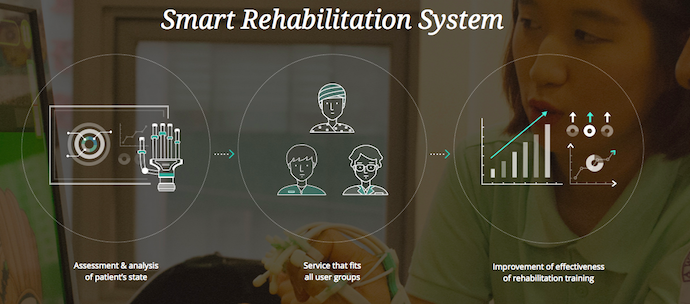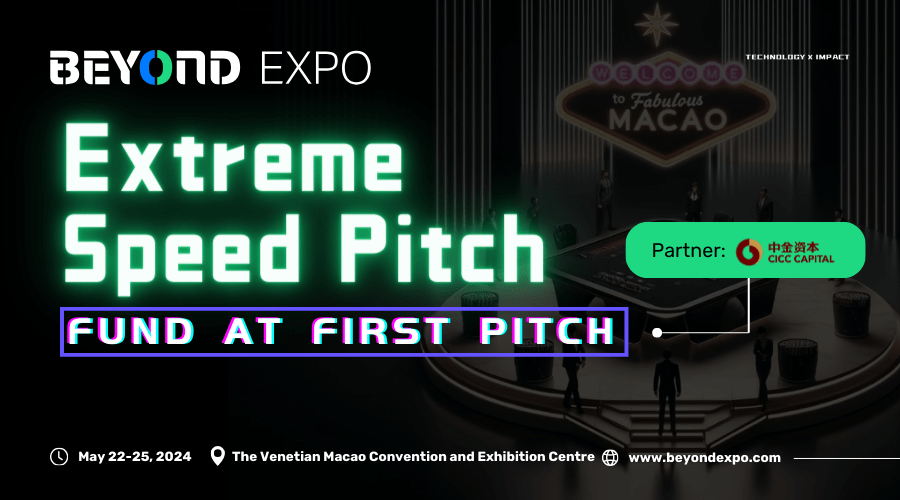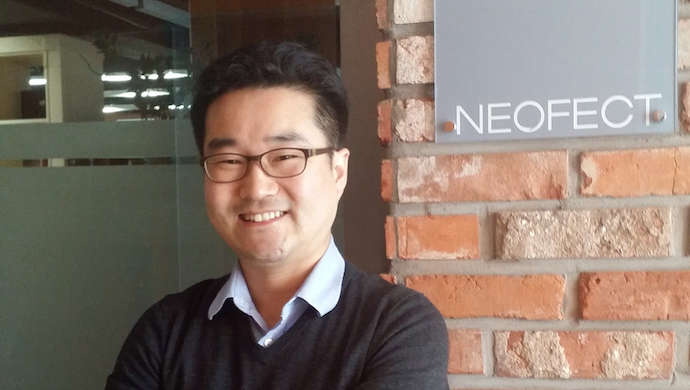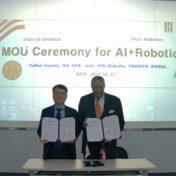Meet NEOFECT, a South Korean tech company that wants to change the face of rehabilitative therapy for victims of stroke and other brain trauma.
Founded by Hoyoung Ban, who is also the CEO, NEOFECT is doing that with RAPAEL, a US$1,000 robotic glove that runs on Android and connects to the user’s phone and TV screens via Bluetooth. Users can don the glove on and manipulate virtual objects on display screens with games and other entertaining activities; this takes away the typical ‘boring’ aspects of rehabilitative programmes. Furthermore, patients will no longer need to head to the hospital for in-person visits; doctors can easily monitor the patients remotely and follow-up using data from the programme.
According to NEOFECT, hospitals in South Korea have already incorporated RAPAEL into their programmes. The company has also established an office in the US to meet the needs of patients across North America.
In order to find out more about the company and RAPAEL, we spoke to Ban.
Here are the edited excerpts…
Tell me more about NEOFECT.
Stroke has an immediate effect (work, mobility, medical costs), not just on the patients themselves but also on their loved ones. Our vision is to make a difference in society, by delivering hope of recovery through affordable rehabilitation and care.
Stroke patients experience long-term disability due to neuron damage, not muscle cells. You cannot revive the dead cells, but you can enhance brain plasticity by training the undamaged cells. Our smart rehab solution, RAPAEL, delivers the combination of hardware to aid the movements of the disabled body parts, and software to analyse and boost its effectiveness, which can greatly improve the rehab process.
There are many people who need the solution, but cannot afford rehab on account of insurance issues, cost, etc. In the US, stroke victims typically get only a few months of rehab after being discharged from the hospital. In reality, however, they need on-going rehab throughout their lifetime. So we want to provide them with an alternative solution, to be able to motivate themselves using a more affordable, at-home assistance.
How did you come up with the idea?
The idea had initially come from my friend and our CTO, Young Choi, who holds a PhD in Computer Science from University of Southern California. At first, he made a rehab robot but realised that it was not practical for personal and at-home use due to production cost, size, etc. However, his research showed that there clearly is a good market for affordable post-stroke care and rehab, and he wanted to pursue the research. I had experience setting up my own tech business both in Korea and the US, so he approached me to discuss the idea.
The idea of delivering an affordable solution to help stroke victims get back on to their feet was particularly appealing for me because of my personal experience — I’ve lost my father to a stroke attack and also two of my uncles were confined to the care of their families because they couldn’t afford rehabilitation care. So I know how difficult it is having to let your loved one lose the ability to go through their day-to-day activities just because you can’t afford the rehab costs.
How big is the company now?
There are 45 people in our Korea and US office. We have experts in engineering, software development and rehab therapy as part of the R&D team, as well as an in-house hardware production capacity.
Has NEOFECT received external funding, and if so, how much and from whom?
We have received US$5.8 million in total investment to date from various VCs including POSCO Venture Partners, DSC Investment, K Partners, SBI Investment and Sejong Investment. We also plan to raise again next year, most likely targetting the global market.
What’s the biggest challenge faced by the company?
We develop solutions for patients who are typically old, sick, depressed and unmotivated. It is a tough job convincing them that things can improve. Keeping them motivated through gamification elements and an easy user interface is, therefore, an essential part of our development.
Also having to keep up with the regulation is challenging. Digital healthcare is a new area, and doctors and regulators are always cautious about trying new methods, so it takes a long time to get things started. Going through clinical trials took us a year, and writing a paper about those trials took us another year. Fortunately, the results were excellent and the paper will be published this year.

The last, but perhaps the most significant challenge was production costs and hours. Making a prototype model costs around US$5,000 and we’ve had to make more than 20 ‘improved’ prototypes before the commercial launch. Also, it takes about a month for doctors to test each prototype and provide us with feedback, so it took us more than two years just testing prototypes and re-testing improved prototypes.
What are your plans in the next six months?
We’ve already started marketing and distribution for the global B2B market and are now in talks with distributors in the US, Europe, Middle East and Japan. However, as our ultimate vision is to deliver affordable at-home rehab for stroke patients, we plan to eventually move towards B2C market. We plan to gradually expand to the global B2C market within the next 18 months.






